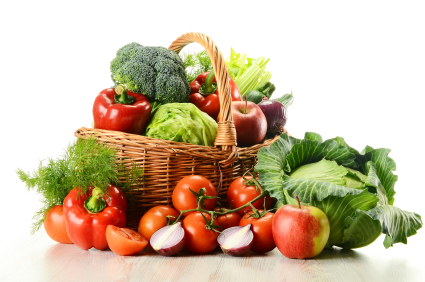It’s the height of summer. The days are long; temperatures are most likely at their highest and all being well you are harvesting something delicious from your plot. July can often be a dry month so watering is crucial as most crops require a steady, unbroken supply of water.
Weed regularly – don’t ease up on hoeing, weeds will be growing as vigorously as everything else of your plot
Mulch to conserve moisture – as soon as possible after rainfall spread mulches such as garden compost to retain the moisture in the soil.
Net against birds – peas, brassicas and soft fruit need to be protected from birds by securing netting
Dry out garlic, onions and shallots – a few days before harvest loosen the soil around the roots. Choose a dry spell of weather, lift the bulbs and lie on the soil surface in the sun. The more thoroughly dry they are the longer they will keep.
Pinch out tops of climbing beans – climbing beans don’t really know when to stop so pinch out the growing tips when they reach the top of the canes or they will soon become tangled and top heavy.
Pinch out tomato shoots – nip off the side shoots and pinch out the growing tip at the top of each plant once four or five trusses have formed – see Pinching Out Tomatoes in Terminology. Feed and tie in Tomatoes, Remove tomato leaves next to fruit to help them ripen quicker.
Feed peppers – start watering regularly with a liquid fertiliser as soon as you see that the first fruits have formed.
Summer prune – gooseberries, redcurrants, white currants, blackcurrants and raspberries and tidy up the strawberry patch.
Brussel sprouts, cabbages and cauliflowers – July is the time to sow cabbages for next spring and your last chance to plant out sprouts, winter cabbages and autumn cauliflowers
Peas & French Beans – last chance for sowing or planting these, any later and the pods are unlikely to develop enough before the onset of frosts
Leeks – finish transplanting out leeks raised in pots or modules/ Earth up Leeks and celery to blanch them.
Lettuce and other salad crops – succession sow more lettuce, rocket, land cress and other salad leaves for an ongoing supply into autumn
Cut Artichokes, or if you struggle to know what to do with them, leave for flowers as the bees love them.
Plant out broccoli.
Lift garlic and shallot bulbs when the tops turn yellow.
Mulch Runner Beans with grass clippings
Feed and tie in cucumbers.
Lift early varieties and earth up maincrop potatoes.
Water down greenhouse to discourage red spider mite as they don’t like damp conditions.
Thin fruit, you will then get bigger apples and pears.
Peg down Strawberry runners. Replace your strawberry bed if three years old or more
Summer prune fruit trees.
Pick blackberries, raspberries and strawberries as soon as they are ripe, or the birds will have them.
Keep an eye out for Potato blight, any recent rain will be bringing it in. If you find any pick and burn leaves, do not compost. If plant is covered badly cut off top as soon as possible, this may save the tubers.
Sow parsley for the winter
Feed, feed, feed most vegetables
Depending on the growing season, you can start lifting onions and shallots towards the month-end
Keep cutting sweet peas
It’s your last chance to sow successional seeds of most things
Clear any beds where crops are spent
Keep feeding
Hoe, hoe, hoe!

